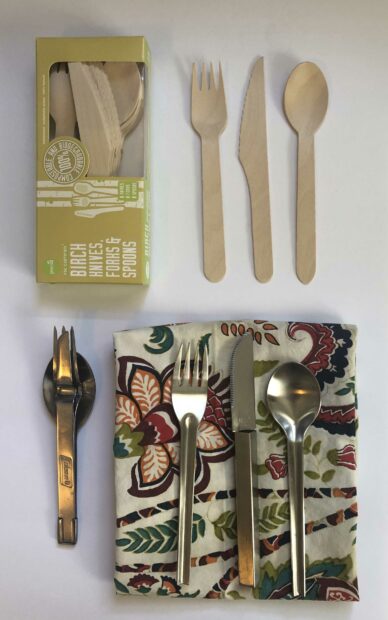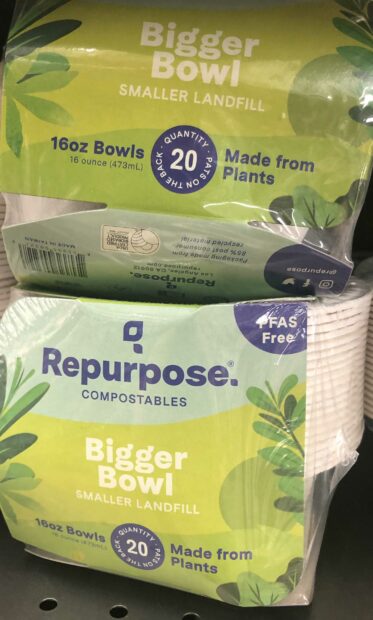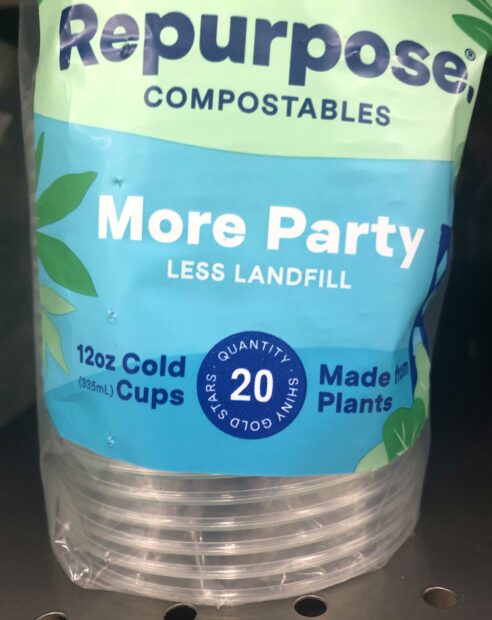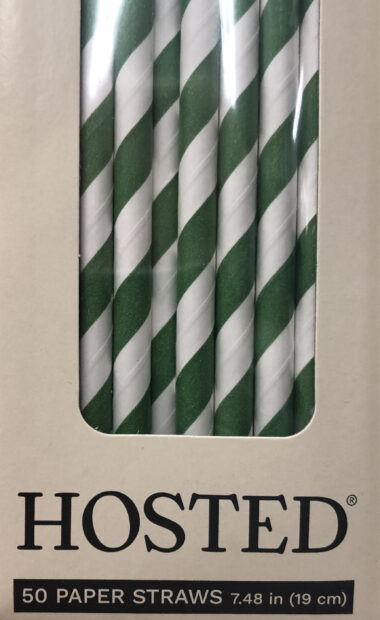“… I want to say just one word… plastics…”
–The Graduate
As the art season commences with its many receptions, can art events be more globally sustainable?
Artists are oftentimes in conflict with their choices of media not aligning with their environmentally sensitive ethics; sometimes, the detritus of their art making is disposed of in hazardous waste facilities. I include myself in this statement. However, art institutions have options for sustainability during celebratory occasions, which can complement and work with exhibitions referencing the ethics of ecological preservation.
During a three-month residency in Berlin, I dined on delicious local and international cuisine prepared by chefs at Markthalle Neun Berlin Kreuzberg, a large food court, with shared tables sited throughout the building. To order a beverage, four euros is required as a deposit for a wine glass or beer stein, which is reimbursed on return of the glass. Libations may be paid for with a credit card. Cutlery is bamboo/wood, accompanied with paper plates. It is assumed that one carries their own water container, which can be refilled, which I did and do (including from San Antonio to Berlin — Amsterdam — and back to Texas). Packaging of to-go food is sustainable; again, one is expected to have their own bag or purchase one. Moreover, the Markthalle provided a place for the community to gather, to converse, to be together, and to enjoy neighbors and friends without rushing.
How does the art world educate attendees to arrive at the “tipping point,” or the moment when social behavior is altered? Starting with small changes, Women & Their Work (WTW) in Austin purchased wine glasses with their logo to use at receptions and as PR-savvy gifts for fundraisers. WTW now has a dishwasher on site, but in the past, board members took boxes of glasses home and washed and returned them as part of their commitment for environmental change. Owning items reduces costs and eliminates staff time for travel and purchasing. Not to mention, wine glasses and ceramic serving plates are more aesthetically pleasing to complement the art, and as artists, gallerists, and curators, aren’t aesthetics important?
In lieu of plastic, plant-based biodegradable cups, plates, and cutlery, as well as paper straws, can be found more and more in local grocery stores. Only 2-10% of plastic is recycled. Understanding the costs associated with city contracts and recycling companies for waste management, bond proposals to build additional landfills, and the raising of taxes to pay for convenient consumption by businesses and citizens could be part of the discussion to change habits. Reduction of waste by being mindful of packaging choices (less is more), by bringing your own items, reusing instead of recycling, and composting, are minimal changes. From a health perspective, microplastics and nanoplastics are found in our environment, food, water, and thus, our bodies.
The tipping point of carrying one’s own bags to the grocery store has occurred in some cities. However, plastic bags in the produce area are available to suffocate your living fruits and vegetables. Are purchased flowers contained in a securely fastened plastic bag? Large white plastic trash bags on aisle X are available for monetary purchase to store your garbage to be buried in the earth. Biodegradable and paper bags exist for produce, yard, and kitchen waste containment; paper towels can be recycled, and reusable cloths are available.
Succulent floral arrangements can be planted, grown, and provide beauty to an organization’s flowerpots. Indigenous plants and herbs used in landscape beds can provide additional green arrangements. Craft galleries could commission artisan-made containers that fit in a purse, bag, or backpack. Artist-made cups, plates, vases, etc. could be purchased for use at events. How lovely to drink out of a uniquely made vessel or purchase one to own and bring to receptions.
The arts can be an example of how to celebrate and respect the earth, and also be economical, which is America’s capitalist raison d’etre. Awareness ideas are a conversation away from implementation. Artists are problem solvers and galleries have X number of great minds to create unique solutions. As Sol Lewitt wrote, “stop it and just DO!”
Suggested Readings & Resources:
—Malcolm Gladwell’s The Tipping Point: How Little Things Can Make a Big Difference
—NPR: Recycling Plastic is Nearly Impossible, and the problem is getting worse
—The Compost Queens SATX: Curbside Community Recycling
—NY Times: “Bottled Water is Full of Plastic Particles. Can They Harm Your Health?”
—PBS: “Scientists find about a quarter million invisible microplastic particles in a liter of water”
—PBS: “Why you may be eating and drinking more microplastics than you thought”










2 comments
A welcomed analysis of the greater function of arts business. Thank you for the insight, Jill
Helpful solutions Jill that we can all implement for the better. Thank you for sharing.